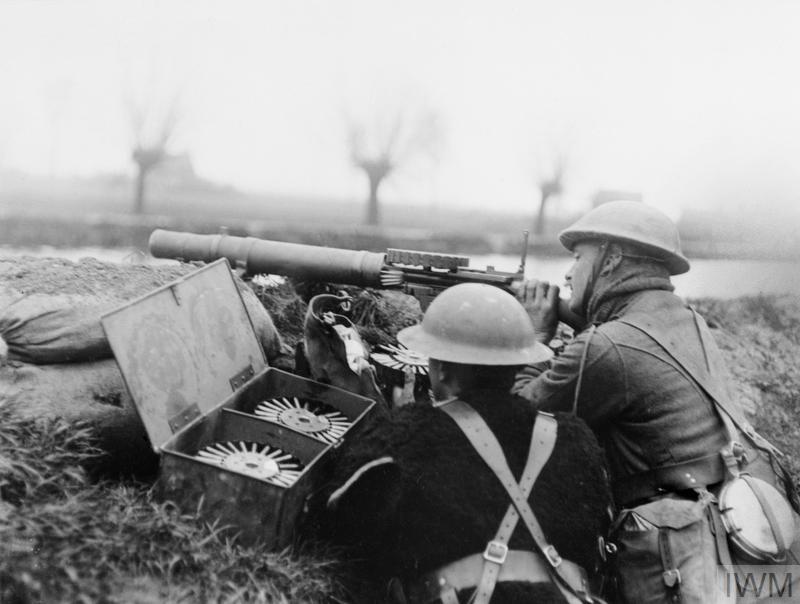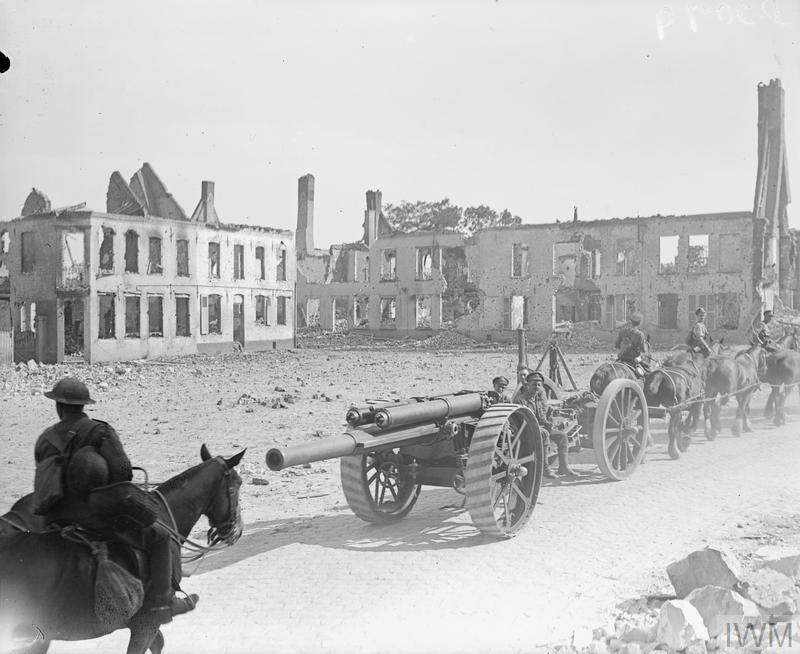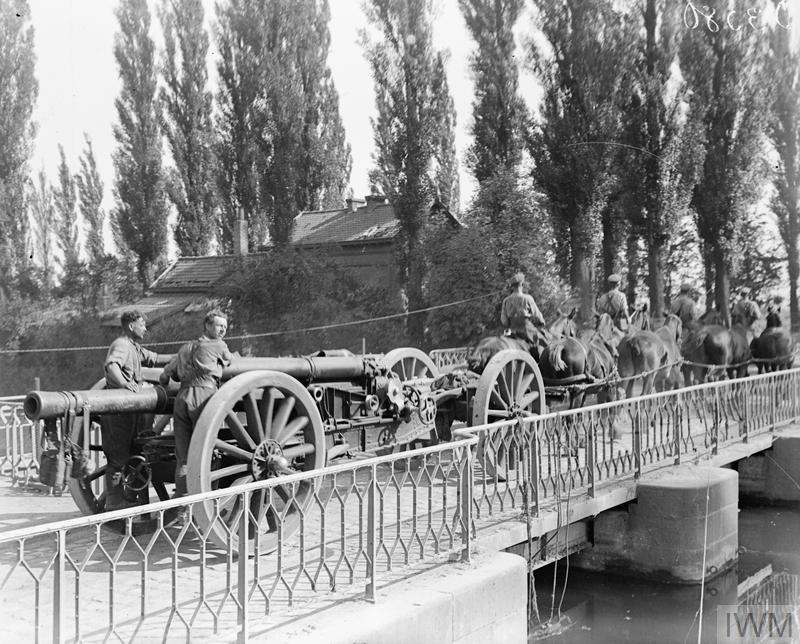ST. VENANT-ROBECQ ROAD BRITISH CEMETERY
Robecq
Pas De Calais
France
GPS Coordinates - Latitude: 50.60655, Longitude: 2.55549
Location Information
St. Venant is a small town in the Department of the Pas-de-Calais about 15 kilometres north-west of Bethune. St. Venant-Robecq Road British Cemetery is on the east side of the main road between St. Venant and Robecq, a smaller village 3 kilometres to the south east.
Historical Information
For much of the First World War, the villages of St. Venant and Robecq remained practically undamaged, but in April 1918, during the Battle of the Lys, the German line was established within 2 kilometres of the road that joins them. The cemetery was begun around 12 April and used as a front line cemetery until the end of July. At the Armistice it contained 47 burials, but was then greatly enlarged when graves were brought in from from the battlefields south of St. Venant and from other cemeteries in the vicinity. The most important of these cemeteries were LA HAYE BRITISH CEMETERY at St. Venant (65 graves), used by the 2/7th Royal Warwicks and 2/8th Worcesters between April and August 1918, and CARVIN BRITISH CEMETERY, Mont-Bernenchon (54 graves), used by fighting units and field ambulances during the same period.
St. Venant-Robecq Road British Cemetery now contains 479 burials and commemorations of the First World War. 85 of the burials are unidentified but there are special memorials to five casualties known or believed to be buried among them.
Total Burials: 479.
Commonwealth Identified Casualties: United Kingdom 393, Australia 1. Total 394.
Commonwealth Unidentified Casualties: United Kingdom 85.
The cemetery was designed by Sir Herbert Baker and William Harrison Cowlishaw

34585 Private
Thomas Barber
2nd/5th Bn. Gloucestershire Regiment
23rd June 1918.
Plot III. C. 7.
Thomas Barber
2nd/5th Bn. Gloucestershire Regiment
23rd June 1918.
Plot III. C. 7.

15283 Private
Herbert Bevis
2nd/4th Bn. Royal Berkshire Regiment
21st June 1918, aged 21.
Plot I. B. 11.
Son of Walter and Matilda Bevis, of Rhodesia Villa, Hurst, Berks.
His headstone bears the inscription: "Absent From The Body Present With The Lord."
Herbert Bevis
2nd/4th Bn. Royal Berkshire Regiment
21st June 1918, aged 21.
Plot I. B. 11.
Son of Walter and Matilda Bevis, of Rhodesia Villa, Hurst, Berks.
His headstone bears the inscription: "Absent From The Body Present With The Lord."

36787 Serjeant
John Richard Garbett M. M. & Bar
61st Bn. Machine Gun Corps. (Infantry)
12th April 1918, aged 23.
Plot II. C. 9.
Son of Richard John and Eliza Garbett, of 17, Langley House, Finger Dawley, Salop.
Picture courtesy of Dave Shaw
John Richard Garbett M. M. & Bar
61st Bn. Machine Gun Corps. (Infantry)
12th April 1918, aged 23.
Plot II. C. 9.
Son of Richard John and Eliza Garbett, of 17, Langley House, Finger Dawley, Salop.
Picture courtesy of Dave Shaw

S/21874 Private
Frank Grieve
4th Bn. Gordon Highlanders
18th April 1918, aged 18.
Plot I. F. 7.
Son of David White Grieve and Margaret Reid Bremner Grieve, of 110, Lochee Rd., Dundee.
His headstone bears the inscription: "Oh Lord Grant Our Dear Son A Place With Thee."
Frank Grieve
4th Bn. Gordon Highlanders
18th April 1918, aged 18.
Plot I. F. 7.
Son of David White Grieve and Margaret Reid Bremner Grieve, of 110, Lochee Rd., Dundee.
His headstone bears the inscription: "Oh Lord Grant Our Dear Son A Place With Thee."

288028 Private
William Thomas Redman
"C" Coy. 2nd/5th Bn. Gloucestershire Regiment
14th April 1918, aged 36.
Plot I. D. 7.
Son of Emma Redman, of 30, Hanover St., St. Paul's, Cheltenham.
William Thomas Redman
"C" Coy. 2nd/5th Bn. Gloucestershire Regiment
14th April 1918, aged 36.
Plot I. D. 7.
Son of Emma Redman, of 30, Hanover St., St. Paul's, Cheltenham.

10066 Corporal
John Wilkinson, M.M.
1st Bn. East Lancashire Regiment
1st July 1918, aged 26.
Plot IV. B. 4.
Son of Thomas Wilkinson; husband of Elizabeth Ellen Wilkinson, of 25, Ivy St., Burnley
John Wilkinson, M.M.
1st Bn. East Lancashire Regiment
1st July 1918, aged 26.
Plot IV. B. 4.
Son of Thomas Wilkinson; husband of Elizabeth Ellen Wilkinson, of 25, Ivy St., Burnley

265054 Serjeant
Gilbert Sloan Wilson
11th Bn. Royal Scots Fusiliers
9th September 1918, aged 30.
Plot IV. A. 14.
Son of the late Gilbert Sloan Wilson; husband of Jeanie Strachan Young Wilson, of East Park, High Fenwick, Kilmarnock.
Picture courtesy of Judy Brodie
Gilbert Sloan Wilson
11th Bn. Royal Scots Fusiliers
9th September 1918, aged 30.
Plot IV. A. 14.
Son of the late Gilbert Sloan Wilson; husband of Jeanie Strachan Young Wilson, of East Park, High Fenwick, Kilmarnock.
Picture courtesy of Judy Brodie


























